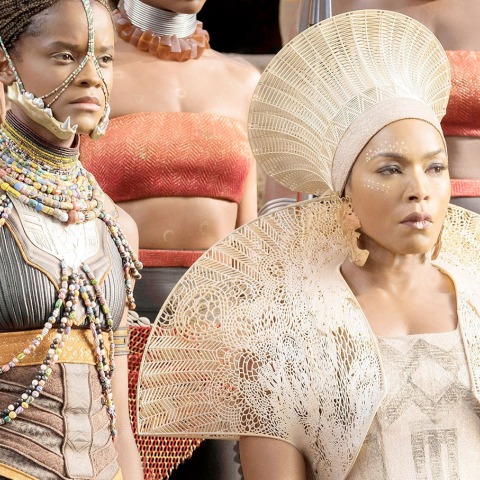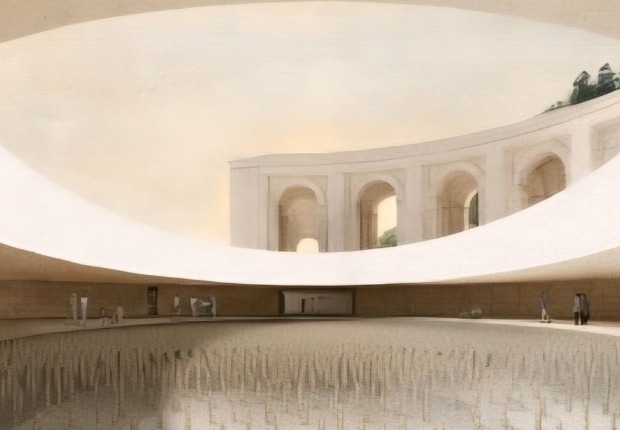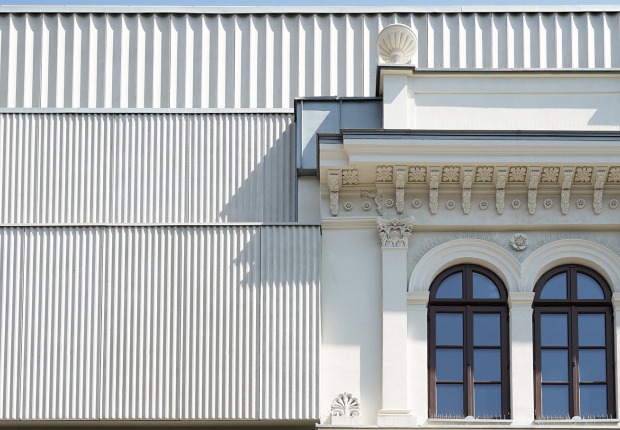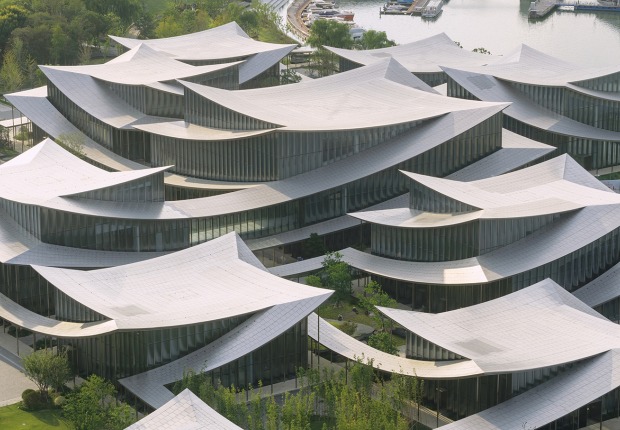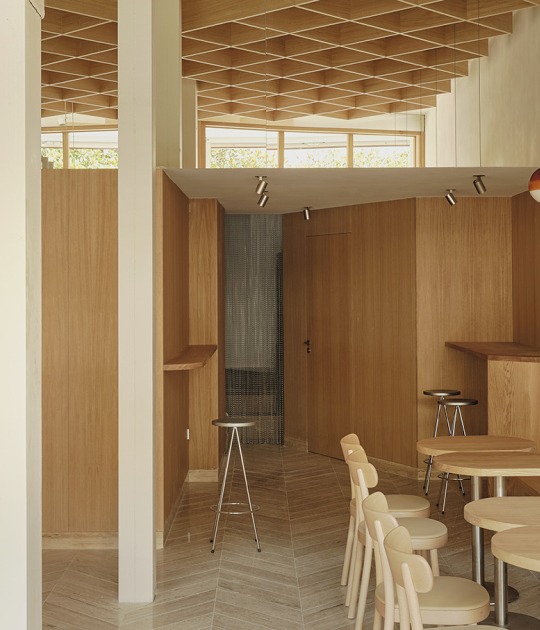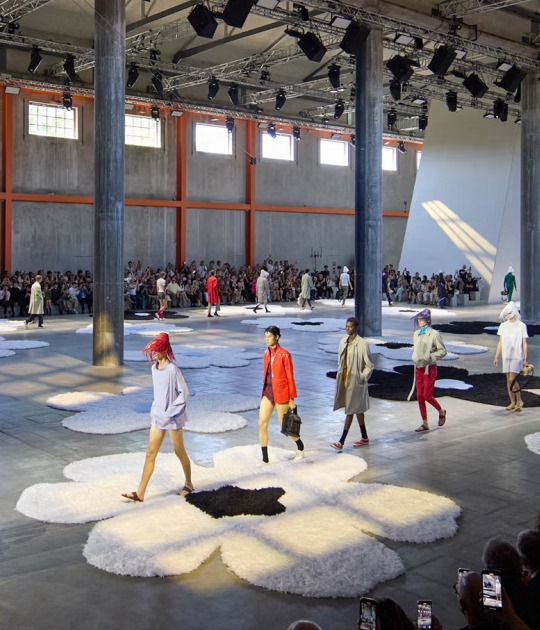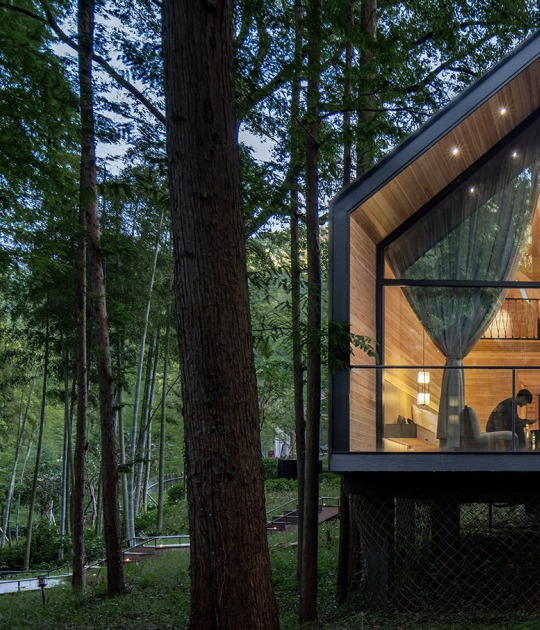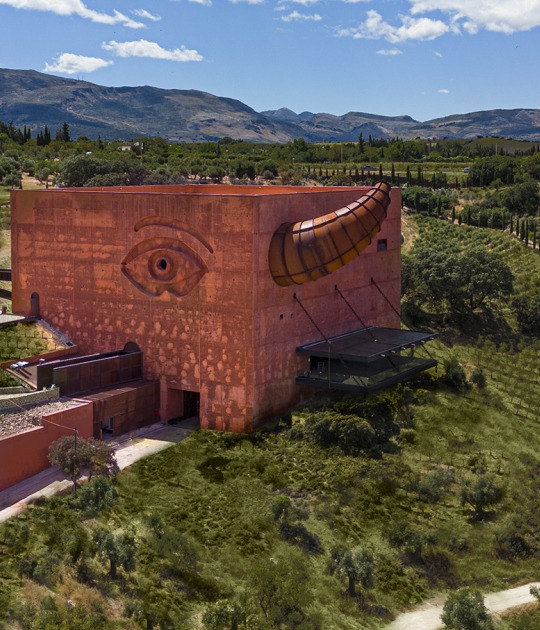In order to bring life inspired by African patterns presented in the initial design sketches, Ruth E. Carter approached Julia Koerner to collaborate on cutting-edge wearables for Queen Ramonda. Zulu hat and shoulder mantle were designed to look as though it were created by technology from the film's fictional setting of Wakanda.
The architect Julia Koerner used traditional techniques combined with her years of experience in designing for 3D printing digital technologies to create the intricate accessories worn by the Queen. She wanted the headdress to convey elements of parametric designs that did not look hand-crafted. Through the use of visual programming software, Koerner and her team developed various geometric pieces through laser sintering and polyamide material. These two components allowed for a higher level of design control and flexibility. Laser sintering is a 3D printing process which lets a material be printed without the need for supports. A material well-suited for skin contact, polyamide is flexible enough to deliver the strength and accuracy Koerner needed for the geometric designs to come to life.
"The kingdom of Wakanda in the film tells the story of a fictional place where advancements in technology and innovation are taking place. The costumes of the character Queen Ramonda were meant to exemplify the combination of traditional African culture and the most high-tech fashion. The costumes were developed with the most cutting-edge technology of additive manufacturing. Ruth E. Carter, whose vision of Wakanda’s culture and aesthetic, drew from various elements of traditional African cultures as well as technology to create an amazing visual tapestry in the film."
